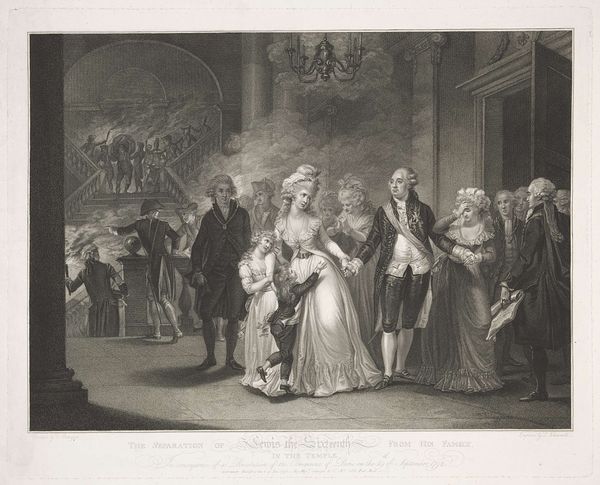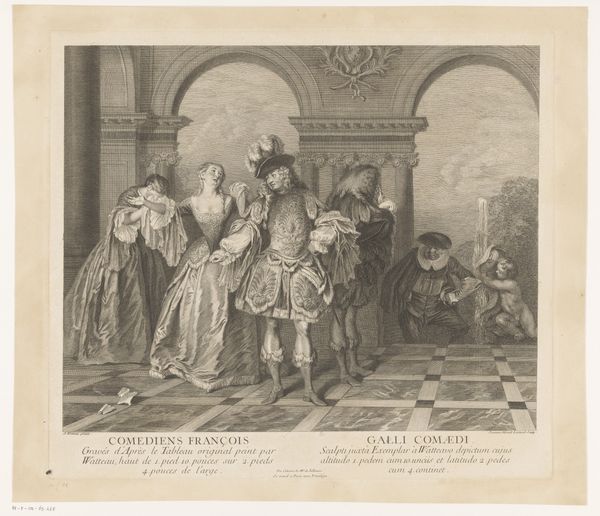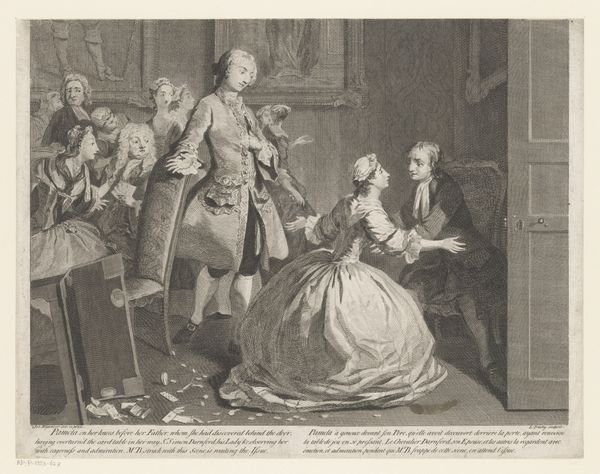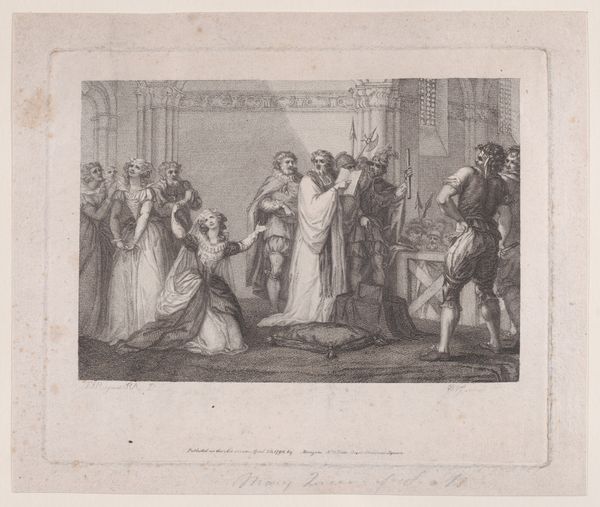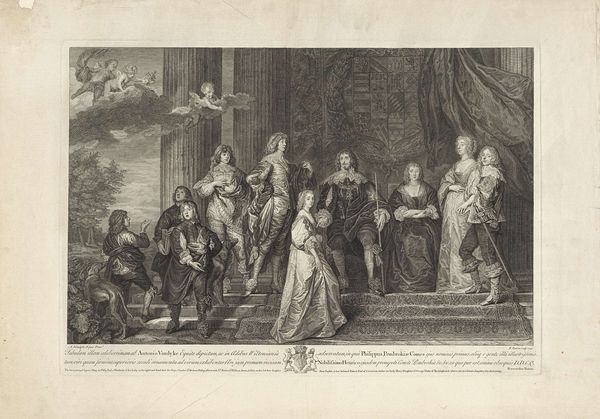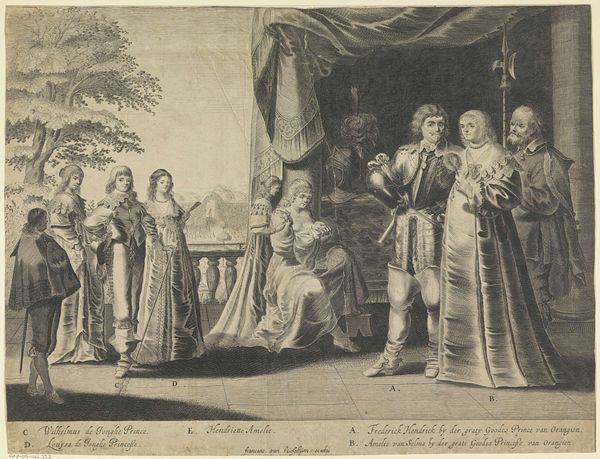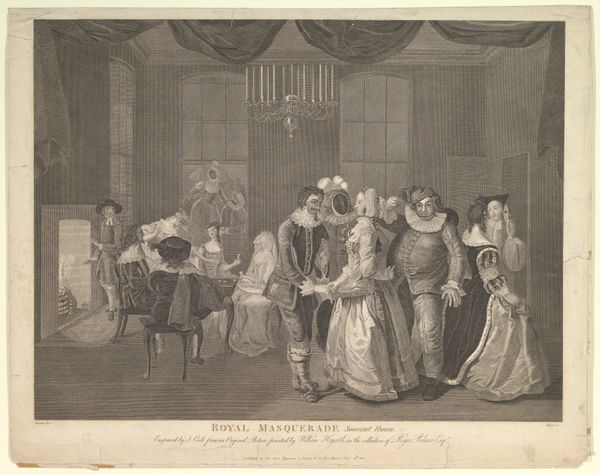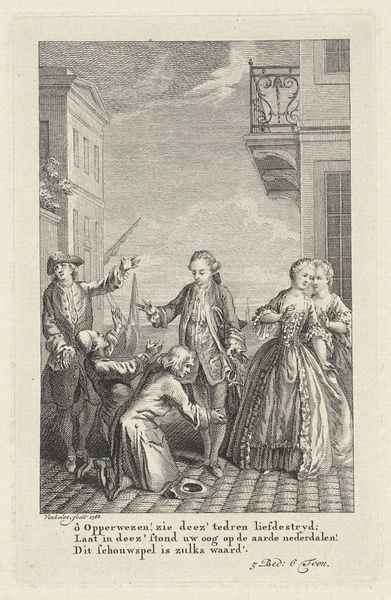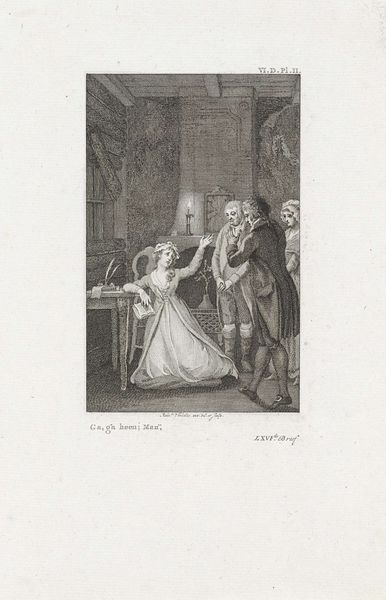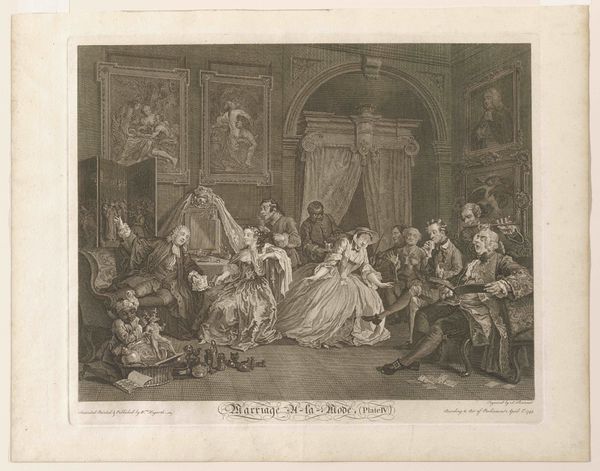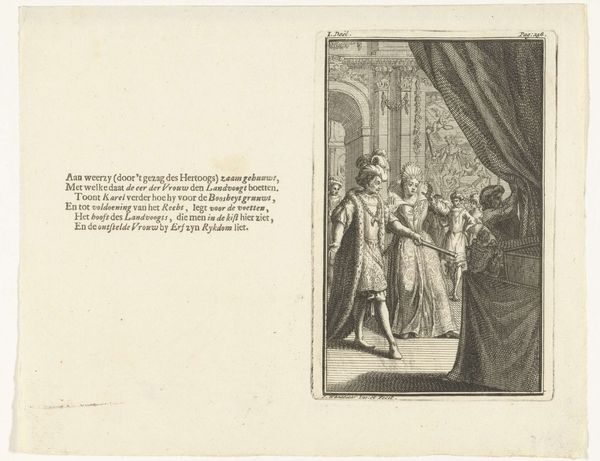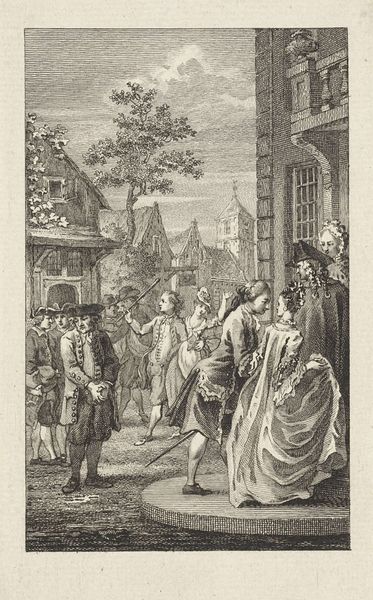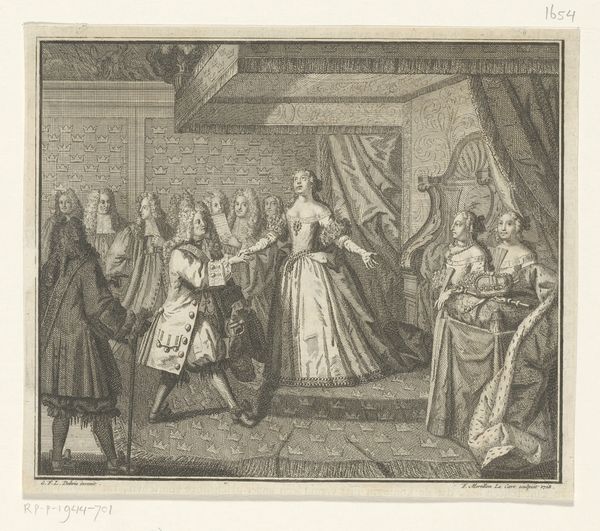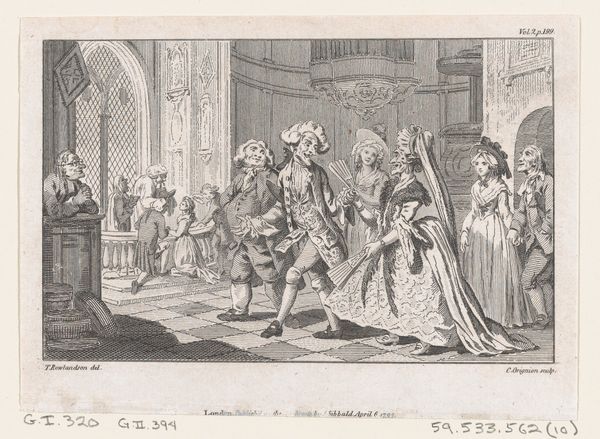
Dimensions: height 219 mm, width 265 mm
Copyright: Rijks Museum: Open Domain
Editor: Here we have an engraving titled "Lodewijk XVI neemt afscheid van zijn gezin, 1792," which translates to "Louis XVI saying goodbye to his family, 1792," made between 1792 and 1794, currently at the Rijksmuseum, and created by Reinier Vinkeles. The scene is intensely melancholic. What social narratives do you think this piece captures? Curator: That’s a very astute observation. Beyond the surface level of a royal family’s sorrow, this work becomes powerful when understood as a staged, Baroque representation of the French Revolution’s impact on societal hierarchies and personal tragedies. Look at how Louis is centered yet seems detached. What does this imply about his position of authority, then being rapidly eroded, when positioned against that staircase, swarming with revolutionary guards? Editor: It's like his world is collapsing, and the family is all that remains, but even that is being taken away. What about the figure of the black child? How does that affect the piece? Curator: Precisely. The black child, often a symbol of colonial wealth and servitude in that era, stands at the very front. Think about the racial and class implications; is Vinkeles, through this figure, making a comment on the entanglements of monarchy, colonialism, and enslaved people, during the period of revolution? It demands that we reckon with these uncomfortable connections. Editor: So it's more than just a goodbye; it's about power, privilege, and a changing world order, but framed within the sentimentality of familial separation. It feels very deliberate. Curator: Exactly! By putting Louis XVI and his family at the forefront, Vinkeles perhaps compels the viewer to contemplate not only the immediate personal ramifications, but also the deep structural changes shaking the foundations of society, a social order that benefited from the labor of subjugated others. What would you say the picture compels *us* to do? Editor: I'd say, that the image forces us to confront the past in all its complexities and the social cost of human inequity in past political and economic orderings. I hadn't initially picked up on all the layers of social commentary within the familial depiction!
Comments
No comments
Be the first to comment and join the conversation on the ultimate creative platform.
